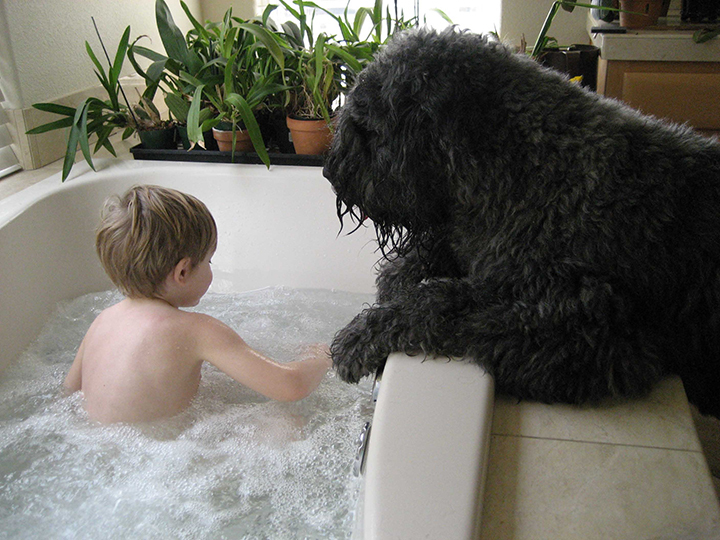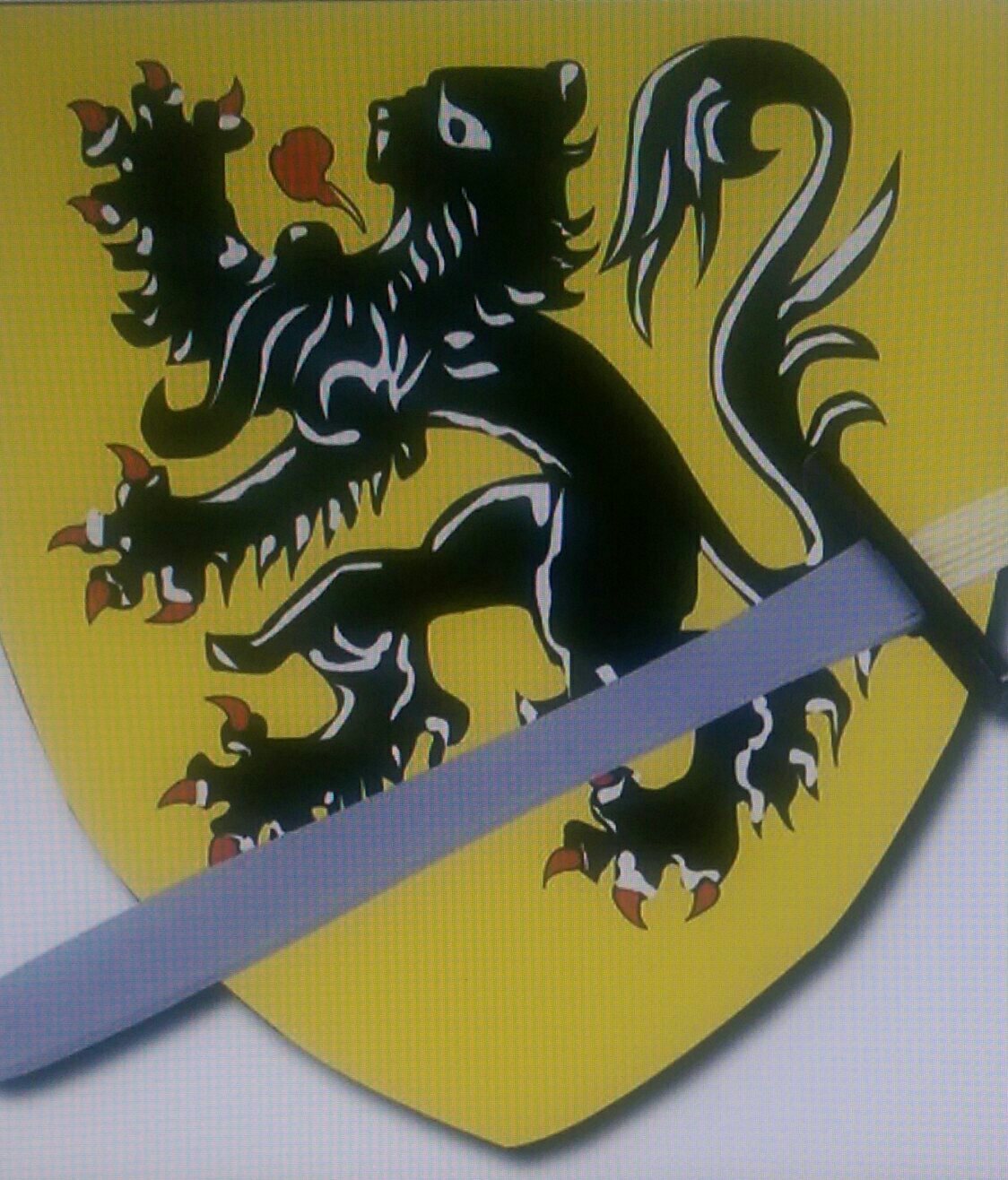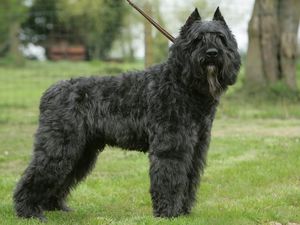Bouvier Des Flandres
Body
About the Bouvier des Flandres

Standing as high as 27.5 inches, with heavy bone and powerful muscles beneath a weatherproof coat, and an impressive head accented by beard and mustache, Bouviers can do anything that needs doing in a barnyard or pasture except milk the cows. And yet, Bouviers are more than just farm equipment. Their sterling character, huge heart, and keen intelligence endear them to dog lovers the world over.
The Bouvier work ethic must be accommodated, and happily the breed’s versatility allows them to do myriad tasks. Bouviers are excellent watchdogs and guardians, and eager participants in dog sports, especially herding trials. These strong-willed dogs do best with owners who can devote ample time and space to a top-of-the-line working dog.
History
Bouvier des Flandres roughly translates as “cowherd of Flanders.” In the breed’s formative years, it was called “vuilbaard” (“dirty beard”), “koehond” (“cow dog”), and “toucher de boeuf or pic” (“cattle driver”)—apt descriptions of this majestic herder. Belgium once had several “bouvier” breeds; the Bouvier des Flandres is the last to exist in any great numbers.
In medieval times, when the Bouvier was first conceived, Flanders was a principality encompassing parts of modern-day France, Belgium, and The Netherlands. (To this day, both France and Belgium claim the Bouvier as a native breed.) As the breed’s many early names suggest, moving cattle was the Bouvier’s primary occupation. But the thrifty farmers of France and the Low Countries preferred owning one versatile dog instead of a team of specialists, so Bouviers earned their keep as herders, watchdogs, guardians, and cart-pullers.
By the turn of the 20th century, Bouviers were attracting the attention of international dog fanciers far from the farms and pastures of Flanders. A Belgian breed club was formed, and French and Belgian experts drew up a written standard. With the outbreak of World War I, however, the Bouvier’s bucolic homeland became a nightmarish battlefield. The region’s farmers were displaced, and their dogs lost or destroyed.
The Belgian army was responsible for keeping the breed alive, and Bouviers distinguished themselves as courageous and resourceful dogs of war. In peacetime, Bouviers burnished their résumé as European police K-9s and guide dogs for the blind.
After the second world war the Bouvier was again nearly extinct, but European expatriates kept the breed alive in America. The American Bouvier des Flandres Club was formed in 1963.
General Appearance
The Bouvier des Flandres is a powerfully built, compact, short-coupled, rough-coated dog of notably rugged appearance. He gives the impression of great strength without any sign of heaviness or clumsiness in his overall makeup. He is agile, spirited and bold, yet his serene, well behaved disposition denotes his steady, resolute and fearless character. His gaze is alert and brilliant, depicting his intelligence, vigor and daring. By nature, he is an equable dog. His origin is that of a cattle herder and general farmer’s helper, including cart pulling.
The Bouvier was bred to do everything that needs doing in a barnyard and pasture except milk the cows. They are happiest when they stay busy. A bored Bouvier can be a very destructive one. They are an excellent fit for an active household with an owner who hikes or jogs or even bikes. The Bouvier needs a large, enclosed exercise area where he can romp and play, preferably with other dogs or kids who will keep him in good condition both mentally and physically. Heavy exercise should be limited while he is a growing puppy.
The Bouvier is happiest when he has a job to do, whether that job is babysitting, herding, obedience, or guard dog or rescue work. Bouviers are easily trained to do almost any type of dog sport or activity, and they usually excel at it. They have a strong prey drive so should be well socialized from the start. They are consummate showmen and enjoy working or competing with their owner at their side. Extremely eager to please, once they know what you want them to do, they will do their best to satisfy you. This breed is well suited for search and rescue work and adapts to the training easily.
Nutrition








Comments
<a... more